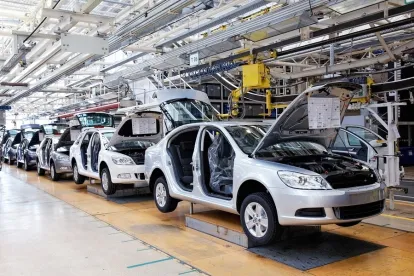This week, we continue with our 2021 outlook series with a focus on environmental, health, and safety. This year brings a new Presidential administration, and with it will come a host of new programs, as well as some new takes on established programs. The following are a few initiatives that could impact manufacturers in 2021.
Focus on Environmental Justice
The Biden/Harris team has made it clear that environmental justice issues will be a priority across a number of platforms. The new administration is expected to focus on the disproportionate environmental impacts felt by low-income communities and communities of color by increasing data collection and communication, remediation, and enforcement. Details are contained in The Biden Plan to Secure Environmental Justice and Equitable Economic Opportunity and include:
-
Reestablishing the White House Environmental Justice Advisory Council and the White House Environmental Justice Interagency Council to develop a detailed framework to ensure that environmental justice concerns are being addressed government-wide;
-
Mandating additional data collection in frontline and fenceline communities and developing a community notification program;
-
Targeting clean energy investment in environmental justice communities; and
-
Establishing an Environmental and Climate Justice Division within the Department of Justice to, among other things, increase enforcement in environmental justice communities.
Increased OSHA Activity Related to COVID-19
Since the pandemic took hold almost a year ago, OSHA has issued a number of guidance documents related to COVID-19. It has, however, refused to adopt any specific standard related to COVID-19, and inspections and enforcement related to COVID-19 have been fairly minimal. The Biden/Harris team released a 4-Point Plan for our Essential Workers, which criticizes the Trump administration for failing to protect workers, and recommends:
-
Creation of an Emergency Temporary Standard with specific, enforceable information related to COVID-19;
-
Adoption of a permanent infectious disease standard;
-
Doubling the number of OSHA investigators; and
-
Coordination with state safety and health agencies, state and local governments, and unions to ensure frontline workers are protected.
Climate Change
Anyone who heard the Biden/Harris team on the campaign trail knows that climate change will be a primary focus of the new administration. The overall goal is a 100 percent clean energy economy and net-zero emissions by 2050. But what does that mean in practice? There will likely be a number of energy and emissions reducing legal and policy initiatives related to climate change, including:
-
Investment in clean energy, sustainable transportation, and biofuels;
-
The development of incentives for building efficiency improvements, including retrofits and clean energy generation;
-
Establishment of an “enforcement mechanism” to achieve net-zero emissions based on the principle that polluters must bear the full cost of their carbon pollution; and
-
Requiring public companies to disclose climate risks and greenhouse gas emissions in their operations and supply chains.
Increased Attention on PFAS
In 2019, the EPA rolled out its PFAS Action Plan, which we reported on at the time and updated you (and updated you again) on the status of implementation. The Biden/Harris team has criticized the slow implementation of this Plan and has promised to take more swift action to regulate PFAS. Specific plans seem to involve many of the action items called for in the current PFAS Action Plan, such as designation of certain PFAS compounds as a hazardous substances, development of enforceable limits under the Safe Drinking Water Act, and accelerating studies and research. However, we can expect the Biden/Harris Administration to move towards these goals more quickly than the prior administration.



 />i
/>i


